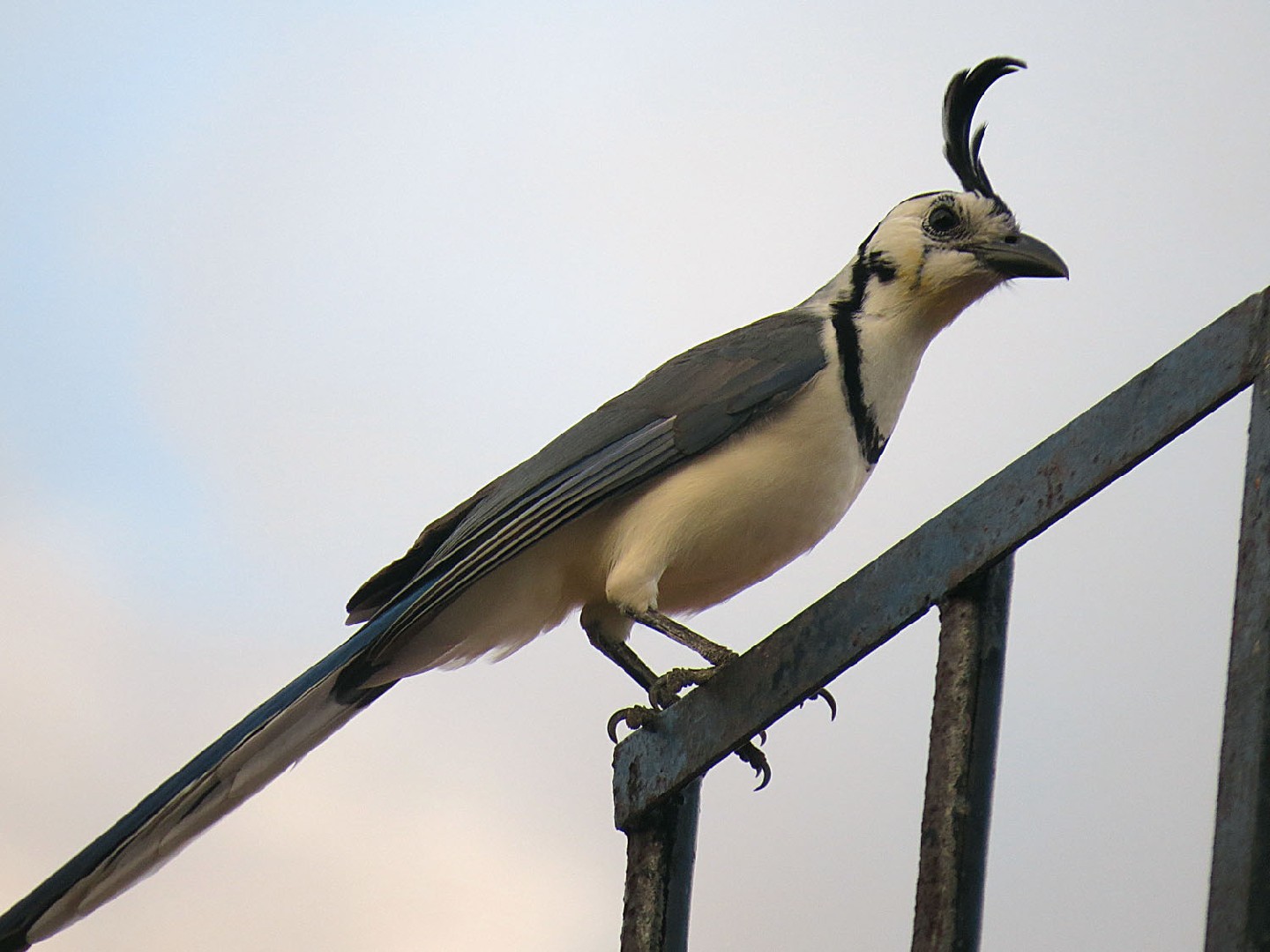White-throated Magpie-jay
A species of Magpie-jays Scientific name : Calocitta formosa Genus : Magpie-jays
White-throated Magpie-jay, A species of Magpie-jays
Botanical name: Calocitta formosa
Genus: Magpie-jays
Content
Description People often ask General Info
Description
The white-throated magpie-jay is between 43 to 56 cm (17–22 in) in length and weighs 205 to 213 g (7.2–7.5 oz). The species has a particularly long tail and a slightly curved crest of feathers on the head. The crest is black in the nominate race, but has blue or white margins on the other two subspecies. The nominate race has a white face with a black crown and margin to the face, forming a narrow band around the throat, as well as a small drop below the eye. The black is less extensive in the other subspecies. The breast, belly and underside of the rump are white, and the wings, mantle and tail are blue (with whitish margins on the tail). The legs and eye are black, and the bill is grey. The plumage of the females is mostly as that of the male but duller on the top, with a narrower band across the chest, and the tail is shorter. 
Size
56 cm
Colors
Black
Gray
White
Blue
Nest Placement
Tree
Feeding Habits
White-throated Magpie-jay's diet is omnivorous, consisting of invertebrates, reptiles, amphibians, bird eggs, seeds, and various plant materials. White-throated Magpie-jay is known for foraging in trees and shrubs and feeding on nectar from Balsa blossoms, demonstrating adaptability in its feeding behavior.
Habitat
White-throated Magpie-jay's habitat includes arid to semi-humid woodlands, such as thorn, deciduous, and gallery forests. Adaptable to disturbed environments, they are found from forest edges to open, bushy country, often near agricultural areas. These birds thrive up to 1250m elevation in regions near watercourses, showing a preference for clumped trees and broken forests, and exhibit adaptability to human-altered landscapes like pastures.
Dite type
Omnivorous
People often ask
General Info
Feeding Habits
Bird food type
Behavior
White-throated magpie-jays are omnivorous, consuming a wide range of animal and plant matter. Items included in the diet include invertebrates such as insects and caterpillars, frogs, lizards, eggs and nestlings of other birds, seeds, fruits, grain, and nectar from Balsa blossoms. Younger birds take several years to acquire the full range of foraging skills of their parents. 
Distribution Area
The white-throated magpie-jay is associated with a wide range of habitats from arid environments to semi-humid woodlands, from sea level up to 1,250 m (4,100 ft), although only occasionally higher than 800 m (2,600 ft). It occurs rarely in columnar cacti forest, but is common in thorn forest, gallery forest, deciduous woodland, forest edges and cultivated areas like coffee plantations. The species does not undertake any migratory movements, although males disperse away from their natal territories a few years after fledging. It is a common species across its range, and is not considered threatened by human activities. 
Scientific Classification
Phylum
Chordates Class
Birds Order
Perching birds Family
Crows and jays Genus
Magpie-jays Species
White-throated Magpie-jay 